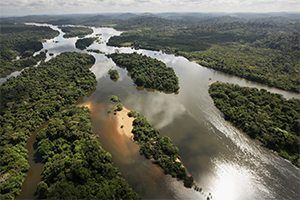Welcome to Facts Vibes! Explore the astonishing world of trees with our latest article, where we unravel 10 captivating facts that will leave you in awe of these magnificent organisms. Join us as we delve into the fascinating realm of trees and discover their secrets.
The Remarkable World of Trees: 10 Astonishing Facts
The Remarkable World of Trees: 10 Astonishing Facts
Trees are the longest-living organisms on the planet. The oldest tree on record is a bristlecone pine in California’s White Mountains, estimated to be over 5,000 years old.
There are over 60,000 tree species in the world, ranging from the towering redwoods of California to the delicate cherry blossoms of Japan.
More than half of the world’s plant and animal species live in tropical forests, making trees integral to the planet’s biodiversity.
Trees provide crucial ecosystem services such as oxygen production, carbon sequestration, and soil erosion control. A single tree can absorb as much as 48 pounds of carbon dioxide per year.
The Amazon rainforest, often called the “lungs of the Earth,” produces about 20% of the world’s oxygen.
Trees communicate and support each other through an underground fungal network, sharing nutrients and information to ensure the health and survival of the forest community.
The tallest tree in the world is Hyperion, a coast redwood standing at a staggering 379.7 feet in California’s Redwood National Park.
The baobab tree, found in Madagascar, Africa, and Australia, is known for its enormous trunk and ability to store hundreds of gallons of water.
The famous General Sherman tree in California’s Sequoia National Park is the largest known living single-stem tree by volume, with an estimated bole volume of 52,508 cubic feet.
Tree rings can reveal valuable information about past climates and environmental conditions, providing insights into the Earth’s history and long-term patterns of change.
These astonishing facts underscore the importance and wonder of trees in our world, reminding us of the critical role they play in sustaining life on Earth.
Most popular facts
Trees produce oxygen through photosynthesis.
Trees produce oxygen through photosynthesis.
The largest tree in the world is a giant sequoia named General Sherman.
The largest tree in the world is a giant sequoia named General Sherman.
Some trees can live for thousands of years, such as the bristlecone pine.
Yes, some trees can live for thousands of years, such as the bristlecone pine.
The rings of a tree can tell its age and provide insights into historical climate conditions.
The rings of a tree can provide insights into historical climate conditions and determine its age.
Trees help reduce air pollution by absorbing harmful gases.
Trees help reduce air pollution by absorbing harmful gases.
The baobab tree has a trunk that can store up to 32,000 gallons of water.
The baobab tree can store up to 32,000 gallons of water in its trunk.
The Amazon rainforest is known as the “lungs of the Earth” due to its abundance of trees and oxygen production.
The Amazon rainforest is known as the “lungs of the Earth” due to its abundance of trees and oxygen production.
Trees provide habitat for a wide variety of animals and insects.
Trees provide habitat for a wide variety of animals and insects.
Certain tree species, like the willow, have medicinal properties.
Willow trees have medicinal properties.
Trees play a crucial role in preventing soil erosion and maintaining healthy ecosystems.
Trees play a crucial role in preventing soil erosion and maintaining healthy ecosystems.
The quaking aspen is considered the largest living organism on Earth, as it spreads through a single root system.
Yes, the quaking aspen is considered the largest living organism on Earth due to its ability to spread through a single root system.
Some trees, such as the eucalyptus, release chemicals that can prevent bacterial growth.
Sure! Eucalyptus and some other trees release chemicals that can prevent bacterial growth.
The national tree of the United States is the oak tree.
The national tree of the United States is the oak tree.
Trees play a key role in mitigating climate change by absorbing carbon dioxide from the atmosphere.
Sure! Trees play a key role in mitigating climate change by absorbing carbon dioxide from the atmosphere.
The process of planting and caring for trees is known as arboriculture.
Arboriculture is the process of planting and caring for trees.
In conclusion, trees are remarkable and essential elements of our planet, providing us with numerous benefits and fascinating characteristics. Their diversity, ability to communicate, and vital role in our environment make them truly extraordinary. It’s important to appreciate and protect these amazing living organisms for the well-being of our planet and future generations.
